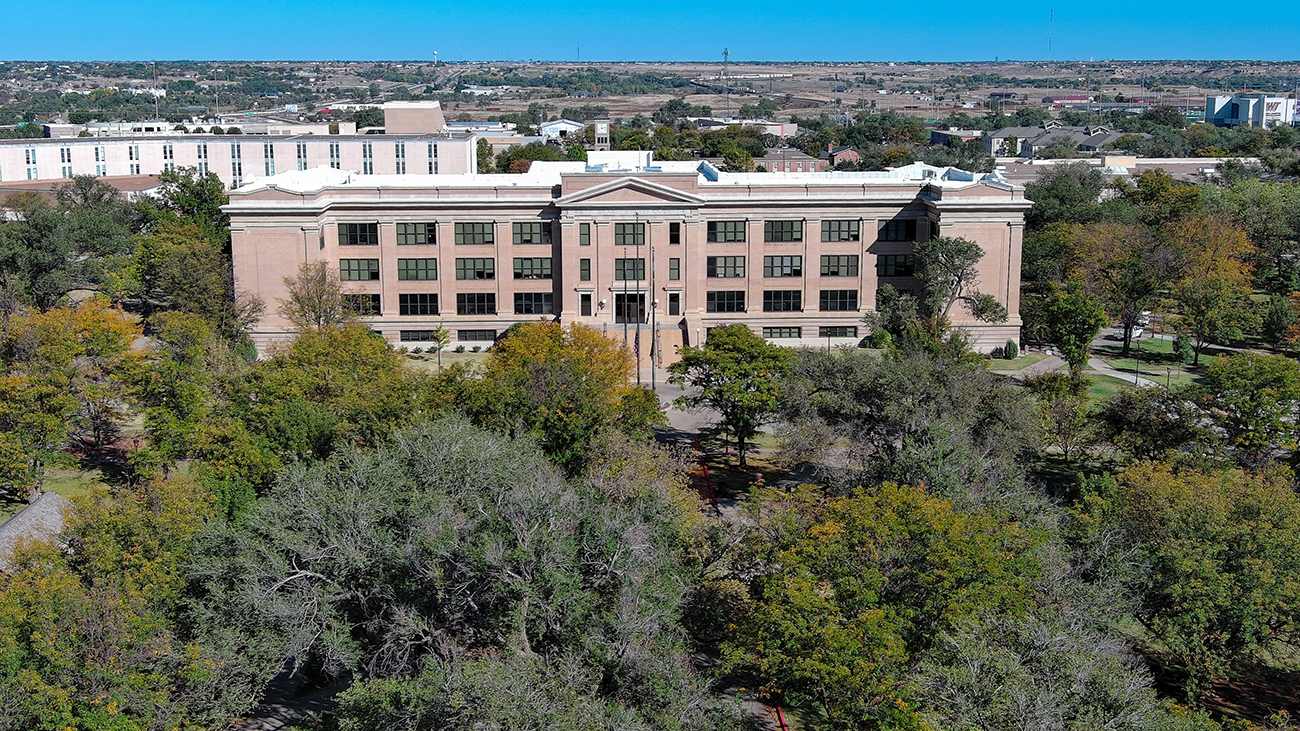- Agriculture
- Featured
- Education
- Engineering
- Arts
- Nursing
- Excellence
- Business
- Social Sciences
- Science
- Health Sciences
WT’s Embedded Associate Degree Program Has Successful First Year
Copy by Chip Chandler, 806-651-2124, cchandler@wtamu.edu
CANYON, Texas — Nearly 1,000 West Texas A&M University students earned a degree during the first year of an innovative new program that helps battle student indebtedness.
In all, 854 students earned embedded associate degrees over the 2024-2025 academic year, according to newly available data.
Under a plan adopted by the University and approved by The Texas A&M University System Board of Regents in February 2024, students can automatically earn one of eight associate degrees once they meet academic requirements while on the path to earning their bachelor’s degree.
In the plan’s first semester, during which only an associate degree in mathematics was available, 91 students earned the degree. Seven additional associate degrees were available during the spring 2025 semester, and 763 students earned them by semester’s end.
WT’s launch of embedded associate degrees was the first such program in Texas and one of the first in the nation.
“For too long, students at four-year public universities in Texas who stopped out during their progress toward a bachelor’s degree were left empty handed,” WT President Walter V. Wendler said. “This has concerned me for a long time. Students often pause their education for many reasons, most often to control debt. But these students should receive something in recognition for their accomplishments. Thanks to this program, they now do at WT.”
The eight embedded associate degrees represent each of WT’s six Colleges: the Paul Engler College of Agriculture and Natural Sciences, the Paul & Virginia Engler College of Business, the Terry B. Rogers College of Education and Social Sciences, the College of Engineering, the Sybil B. Harrington College of Fine Arts & Humanities and the College of Nursing and Health Sciences.
The numbers broken down by degree programs are as follows: 40 associate of arts degrees in liberal arts and humanities; 35 associate of arts degrees in multidisciplinary studies; 119 associate of science degrees in business; 13 associate of science degrees in education; 220 associate of science degrees in health sciences; 16 associate of science degrees in mathematics; 272 associate of science degrees in natural sciences; and 48 associate of science degrees in social sciences.
Students do not enroll in an associate degree program, so the plan is not meant to compete with community colleges. Rather, the degree is automatically awarded to them once they meet the requirements. They are mailed a diploma, but they do not take part in graduation ceremonies. These degrees are not awarded to students who already hold an associate degree.
According to the U.S. Bureau of Labor, people with associate degrees earn almost 14 percent more in average weekly earnings. Those holding an associate degree are 38 percent more likely than those with a high school degree to be in a management, professional or other related job.
The New York Times reported that about 37 percent of students who enrolled in four-year institutions in 2013 and took on student loans didn’t graduate within six years. The rate jumped to 75 percent for students at private institutions. Without a degree, those students often struggle to repay their loans and end up mired in debt.
The embedded associate degree plan is another example of WT’s commitment to reducing student debt. A recent study shows that the average debt for WT graduates has dropped 23 percent over the past seven years.
WT officials say the associate degree program also supports the University’s efforts in student retention in two ways.
First, students who feel they need to pause their education will be encouraged to see how close they are to completing the embedded associate degree. If they can finish that degree before pausing, they likely will be able to earn higher salaries in the workforce. They also will have completed the University’s core curriculum, so it would be easier for them to return to WT in the future.
Plus, students often struggle between their sophomore and junior years, said Dr. Chris Thomas, vice president for student affairs.
“By creating a midpoint benchmark, we hope students will see what progress they’ve made and will be encouraged to continue on to complete their bachelor’s degree,” Thomas said.
Students will be required to reach 60 semester credit hours to earn the embedded associate degree — 42 hours of core curriculum courses and 18 hours aligned with their major.
WT’s embedded associate degree plan aligns with THECB’s “Building a Talent Strong Texas” initiative and its 60x30TX plan to have at least 60 percent of Texans attain a postsecondary credential by 2030.
Providing regionally responsive academic programs is a key mission of the University’s long-range plan, WT 125: From the Panhandle to the World.
That plan is fueled by the historic One West comprehensive fundraising campaign, which reached its initial $125 million goal 18 months after publicly launching in September 2021. The campaign’s new goal is to reach $175 million by 2025; currently, it has raised more than $165 million.
About West Texas A&M University
WT, a Regional Research University, is redefining excellence in Canyon, Texas, on a 342-acre residential campus, as well as the Harrington Academic Hall WTAMU Amarillo Center in downtown Amarillo. Established in 1910, the University has been part of The Texas A&M University System since 1990. WT, a Hispanic Serving Institution since 2016, boasts an enrollment of more than 9,000 and offers 66 undergraduate degree programs, including eight associate degrees; and 44 graduate degrees, including an integrated bachelor’s and master’s degree, a specialist degree and two doctoral degrees. The University is also home to the Panhandle-Plains Historical Museum, the largest history museum in the state and the home of one of the Southwest’s finest art collections. The Buffaloes are a member of the NCAA Division II Lone Star Conference and offers 16 men’s and women’s athletics programs.
—WT—

